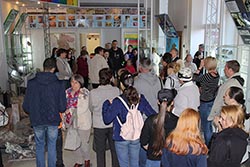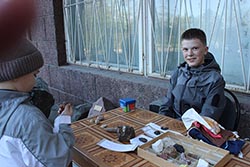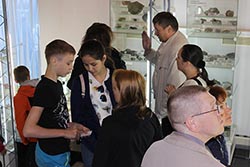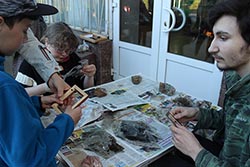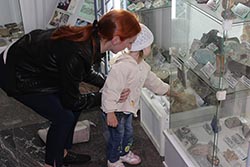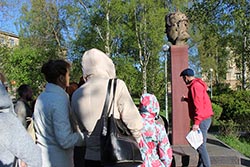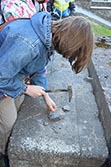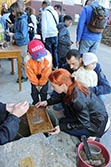There were not only exhibits, but a whole Alaskan ‘gold fever’-style miners’ camp. Anyone could wash some ‘gold’ out of a wooden tray filled with sand containing pyrite – a mineral very similar to the noble metal, or crush mica schist from Pitkaranta with a geological hammer to extract a real garnet, or make a Medieval ‘window’ from a sheet of muscovite mica formerly mined for in Louhsky District. What’s most important – all of that could be taken home as souvenirs.
The numerous visitors gladly solidified this hands-on knowledge about the underground assets of Karelia through non-stop excursions of the geological museum. They learned that owing to the well-preserved traces of the origins of life on Earth stored in the Karelian land, it has the potential to become a ‘Mecca’ for scientists from around the world. Besides, there is a rich variety of useful minerals waiting to be used for the development of the regional and national economy.
Quite many of the visitors willingly joined the walking tour of the nearby city areas. Thanks to the geologist guiding the tour, its participants managed to look at the familiar buildings and monuments from a different perspective. Unique purple-red quartzite was not only the material for Napoleon’s tomb and Lenin’s mausoleum, but was also used in the foundation of the Petrozavodsk University main building, for facing the entrance to the Karelian Legislative Assembly, and for decorating the viewing balcony on Pushkinskaya Street. The equally celebrated Pudozh garnets were used not only for trimming the Naval Academy building in St. Petersburg, metro stations and Olympic facilities in Moscow, but also as foundations of houses built in Petrozavodsk in the 1940’s-1950’s.



